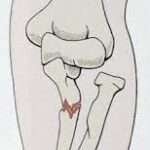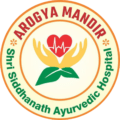Fracture and Dislocation

Fractures and dislocations are common musculoskeletal issues that impact millions of people globally. In Ayurveda, the ancient Indian system of medicine, these conditions are viewed through a unique lens that considers the balance of doshas—Vata, Pitta, and Kapha—in the body. As our body starts healing immediately after fracture and dislocation, it is necessary to regulate proper healing process. Thus immediate treatment is necessary. Otherwise irregular healing occur which may lead to various problems.
Ayurvedic Perspective on Bone Health
Ayurveda places significant emphasis on maintaining balance in the doshas for overall well-being, including bone health. Vata dosha, associated with movement, plays a crucial role in the occurrence of fractures, while Pitta and Kapha contribute to bone strength and stability. Bones are called Asthi in Ayurveda. Asthi is one of the basic dhatus of the body. It supports body and all tissues. Bone joints are known as Sandhi in Ayurveda.
Understanding Fractures in Ayurveda
In Ayurved, Bhagna is common term used for fracture and dislocation. Bhanga has two types one is fracture and other is dislocation. Bhagna has lots of subtypes. Sushruta “Father of Surgery” described this in detail. Ayurveda recognizes various types of fractures based on doshic imbalances and external factors. Factors such as age, diet, and lifestyle also influence the likelihood of fractures.
Causes of Fractures
- Strong physical trauma is main reason. This trauma are of following kinds.
- Fall on ground
- Pressure / Torture
- Strong physical impact
- Accident
- Excessive weight lifting / exercise
Symptoms of Fracture & Dislocations
- Immovable joint
- Severe pains during any movement
- Redness in area
- Warmness in area
- Swelling
- Tenderness
- Pain doesn’t reduce in any kind of posture.
Ayurvedic Diet for Bone Health and Easy Recovery
Foods to Include:
1. Calcium-Rich Foods:
Incorporate dairy products (milk, yogurt, cheese), green leafy vegetables (kale, broccoli), sesame seeds, and almonds to ensure sufficient calcium intake for bone strength.
2. Vitamin D Sources:
Include sunlight exposure, fortified dairy products, fatty fish (salmon, mackerel), and egg yolks to support vitamin D absorption for enhanced calcium utilization.
3. Protein-Rich Foods:
Opt for lean protein sources like poultry, fish, beans, lentils, nuts, and seeds to aid in tissue repair and recovery.
4. Magnesium-Rich Foods:
Include whole grains, nuts, seeds, leafy green vegetables, and legumes to enhance magnesium intake, crucial for bone health and calcium absorption.
5. Vitamin C-Enriched Foods:
Consume fruits like oranges, strawberries, kiwi, and vegetables such as bell peppers and tomatoes to promote collagen formation essential for bone and connective tissue.
6. Phosphorus-Containing Foods:
Choose phosphorus-rich foods like dairy products, meat, fish, nuts, and whole grains to contribute to bone mineralization.
7. Herbs and Spices:
Incorporate Ayurvedic herbs and spices like turmeric, ginger, and cumin into your meals for their bone-strengthening properties.
8. Adequate Hydration:
Ensure sufficient water intake to support overall health and facilitate nutrient transport to cells, aiding in the healing process.
Foods to Avoid:
1. Processed Foods:
Minimize the consumption of processed and refined foods, as they may contribute to inflammation and hinder the healing process.
2. Excessive Caffeine and Alcohol:
Limit the intake of caffeine and alcohol, as they can potentially interfere with bone health and the body’s natural healing mechanisms.
3. High-Sugar Foods:
Reduce the consumption of high-sugar foods, as excessive sugar intake may contribute to inflammation and negatively impact bone health.
4. High-Salt Foods:
Moderate your salt intake, as excessive salt consumption can contribute to calcium loss from the bones.
5. Avoidance of Specific Trigger Foods:
Based on individual sensitivities or Ayurvedic guidance, identify and avoid any specific trigger foods that may hinder the healing process or aggravate dosha imbalances.
Ayurvedic Treatment
1. Herbal Medications:
– Ayurvedic practitioners may prescribe herbal formulations known for their bone-strengthening properties. Common herbs include Ashwagandha (Withania somnifera), Shatavari (Asparagus racemosus), and Guggul (Commiphora wightii).
2. External Applications:
– External applications of medicated oils, known as Abhyanga, are often recommended. These oils may contain herbs like Bala (Sida cordifolia) and Eranda (Ricinus communis), promoting local circulation and reducing inflammation.
3. Dietary Recommendations:
– A balanced diet rich in calcium, vitamin D, and protein is emphasized to support bone health. Ayurvedic dietary principles are applied based on the individual’s dosha constitution and specific needs for bone healing.
4. Panchakarma Therapies:
– Panchakarma, a set of Ayurvedic detoxification therapies, may be employed to remove toxins and enhance the body’s healing capabilities. Virechana (purgation) and Basti (medicated enema) are examples of Panchakarma therapies that may be considered.
5. Immobilization and Rest:
– Proper immobilization of the fractured limb or area is essential for healing. Ayurvedic guidelines recommend rest and limited movement to allow the bones to mend without stress. Affected are can be immobilized by plaster application.
6. Ayurvedic Bone Setting Techniques:
– Some traditional Ayurvedic practitioners specialize in bone-setting techniques known as “Bhagna Chikitsa.” These techniques involve gentle manipulation of the fractured bones to align them correctly.
7. Use of Ayurvedic Minerals:
– Ayurvedic formulations containing minerals like Shilajit and Praval (coral) may be prescribed to support bone health and aid in the mineralization process.
8. Regular Follow-ups:
– Regular follow-ups with an Ayurvedic practitioner are crucial to assess progress, make necessary adjustments to the treatment plan, and address any potential complications.
FAQ
- Ayurveda can complement modern treatments, offering a holistic approach to recovery.
- Results vary, but consistent adherence to Ayurvedic therapies can expedite the healing process.
- Ayurvedic lifestyle practices contribute to overall bone health, reducing the risk of future injuries.
- Ayurvedic treatments can be adapted for children, but consultation with a healthcare professional is recommended.
Uniqueness of our therapies
At Arogya Mandir – Shri Siddhanath Ayurvedic Hospital, Miraj, we delve deeply into the ayurvedic examination of each patient. Utilizing noninvasive Ayurvedic diagnostic tools such as Ashtavidha Parikshan and Nadi Parikshan, we precisely determine the pathogenesis of the disease and then prescribe therapies tailored to the specific condition. This approach leads to expedited results.
Our therapies boast the following distinctive features:
– Tranquil and hygienic therapy rooms staffed with trained therapists in a positive environment.
– Selection of appropriate massage oil based on the patient’s Prakruti and the condition of the disease.
– Complimentary Prakruti and Dhatu Sarata examinations before the commencement of therapies.
– Authenticated procedures for each therapy.
– Judicious use of herbal medicines and instruments during the therapy sessions.
– Specialized rooms equipped with all facilities for inpatient care.
Feel free to share this article at no cost.
Copyright message – Dr. Prashant Chivate has published this article on drchivateayurved.org for informational purposes about diseases. Any other use of this article is strictly prohibited. All rights reserved.
